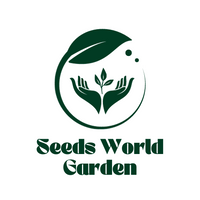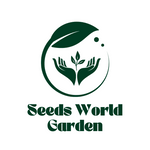Quantity: 35+ Seeds
Color: As picture
Free Shipping and Buy 2 Get 1 Free
1. Seeds are an important part of the agricultural industry, providing vital nutrition for a variety of plants, animals and humans. They are typically small, round or oval, and come in a variety of colors and textures. They can be used to propagate plants, as a source of food, and in the production of a wide range of products. Seeds are also an important part of the environment, providing a habitat for wildlife and helping to maintain soil
2. Plants produce many different types of seeds, each with its own unique characteristics. Common types of seeds include grass, cereal, fruit, vegetable and herb seeds. Some seeds, such as sunflower seeds, are edible, while others, such as cotton, are used to produce fabric or paper. Each seed is made up of several components, including an outer shell, an inner kernel, and a protective coating.
3. The most common way of obtaining seeds is by buying them from a seed supplier. Many gardeners also collect their own seeds from plants in their gardens. Collected seeds can be stored in a sealed container in a cool, dry place. Once the seeds are gathered, they must be germinated, or sprouted, before they can be planted.
4. Planting seeds begins with preparing the soil. The soil should be evenly moist and free of weeds and other debris. The seeds should then be planted at the appropriate depth and covered with soil. The soil should be kept moist, but not overly wet, and the seeds should be kept in an area of the garden that receives plenty of sunlight.
5. Once the seeds have been planted, they must be nurtured in order to ensure their growth. This includes providing the plants with adequate water and nutrients, as well as protecting them from pests and diseases. Properly cared for, the seeds will eventually produce flowers and fruits, which can then be harvested. Seeds can also be harvested and used again to propagate more plants.
How to Grow Your :
1. Soak in water for 24 to 48 hours before you t them. This allows moisture to penetrate the coat and leads to swelling of the ’s parts to spur germination.
2. Find a location with well-drained, organic-rich, sandy or silt loam and with a minimum average temperature of about 60 degrees Fahrenheit during the t’s early growth. The most favorable temperature range is between 75 to 80 degrees. The t should ideally receive six hours of sun per.
3. Till the soil to rid it of weeds and to increase air circulation. Apply compost to the soil after tilling.
4. Place two or three in a hole about ½ to 1 inch deep in the soil along a fence or under a 6-foot-tall trellis form. The holes should be 15 to 23 inches apart and rows 3 to 5 feet apart.You can also start in small plastic pots in a commercial soil mix.
Shipping:
All orders Free Shipping and Buy 2 Get 1 Free. Normally North American delivery time will take 7-14 days (shipping delays due to large orders will add 1-3 weeks depending on time). Other areas please wait 14-28 days for the order to arrive.
RETURN POLICY
We have a 30-day return policy, which means you have 30 days after receiving your item to request a return.


